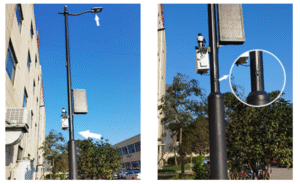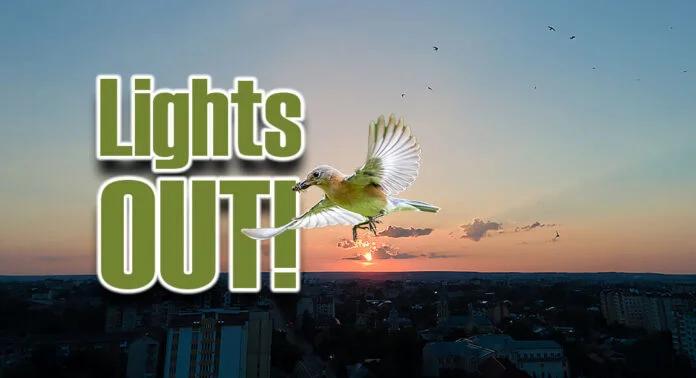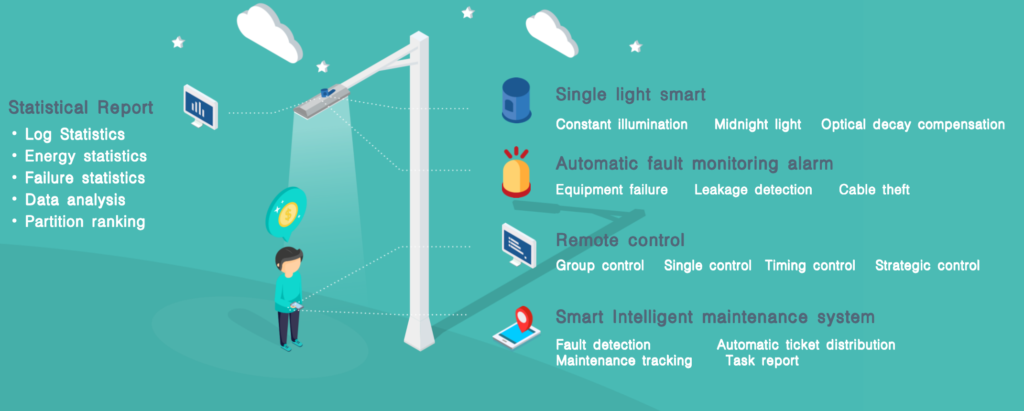Outline
- Introduction
- How Light Sensors‘ Automatic Response to Natural Light Changes Works?
- How Do Motion Sensors Deliver Intelligent Lighting Through Movement Detection?
- Which Performs Better, Photocontrollers or Motion Sensors?
- What Factors to Consider When Choosing the Appropriate Technology?
- The Bottom Line

Outdoor lighting is evolving fast. The primary precursors driving this change are smart control technologies. The two most critical of them are:
- Photocontrollers
- Motion sensors
Both offer automatic lighting control, but their principles and applications differ greatly. Photocontrollers react to changes in natural light. Similarly, motion sensors respond to movement.
The choice between them is subject to your personal preferences. This article breaks down how to select the right solution for your needs.
How Light Sensors‘ Automatic Response to Natural Light Changes Works?
Photo sensors monitor natural light levels and switch lighting circuits accordingly.
- In daylight, the sensor’s resistance drops. This signals the control to open the circuit, turning the lights off.
- As ambient light decreases, the sensor resistance increases. This triggers the circuit to close, turning the lights on automatically.
Main Use Cases for Photocell Switches
Outdoor photocell light sensors are ideal in scenarios where lighting should follow the natural day–night cycle without intervention. Their primary use case involves:
- Street lighting
- Roadway illumination
- Landscape lighting
- Architectural lighting
- Garden lights; and
- other outdoor decorative installations
Advantages of Using Photocells for Street Lights:
- Hands-off operation:
Once installed, lights run without needing timers or manual switching.
- Alignment with nature:
Lights adapt to changing day length through seasons.
- Energy saving:
Lights stay off during daylight hours automatically.
- Reduced maintenance:
Less switching by hand reduces wear and human error.
How Do Motion Sensors Deliver Intelligent Lighting Through Movement Detection?
In these devices, infrared and microwave are usually employed to detect movement. Given below are the details:
PIR Sensors
These products detect changes in infrared radiation emitted by warm objects. When a person or vehicle moves across zones with a stable background IR, the change creates a differential. This triggers the light to turn on.
Microwave
These lighting controls emit microwave signals and measure shifts in the reflected waves. This is known as the Doppler effect.
When movement occurs within the detection zone, the reflection changes. The sensor detects this variation and activates the response.
Key parameters influencing performance
● Sensing range
Microwave sensors often offer farther reach—sometimes up to 20 m or more—and can “see” through non-metallic obstacles.
● Sensitivity adjustment
Many sensors provide settings to raise or lower sensitivity, helping to reduce false triggers from small animals, wind, or foliage.
● Response accuracy & false alarms
PIR is less prone to triggering from minor movements behind obstacles, but may miss motion when ambient and body temperatures are similar.
Microwave can detect motion even behind obstacles, but is more susceptible to false positives (e.g., tree branches, passing vehicles) unless filtering or dual-tech logic is used.
PIR vs Microwave Motion Sensors — Technical Comparison
| Feature | PIR Sensor | Microwave Sensor |
| Detection Method | Senses changes in infrared radiation | Emits & detects reflected microwaves |
| Typical Range | 10–30 m | 20–100 m (depending on power) |
| Obstacle Penetration | No | Yes (glass, thin walls) |
| Sensitivity to Weather | High (affected by heat) | Moderate, but can cause false triggers |
Motion Sensors: Typical Applications
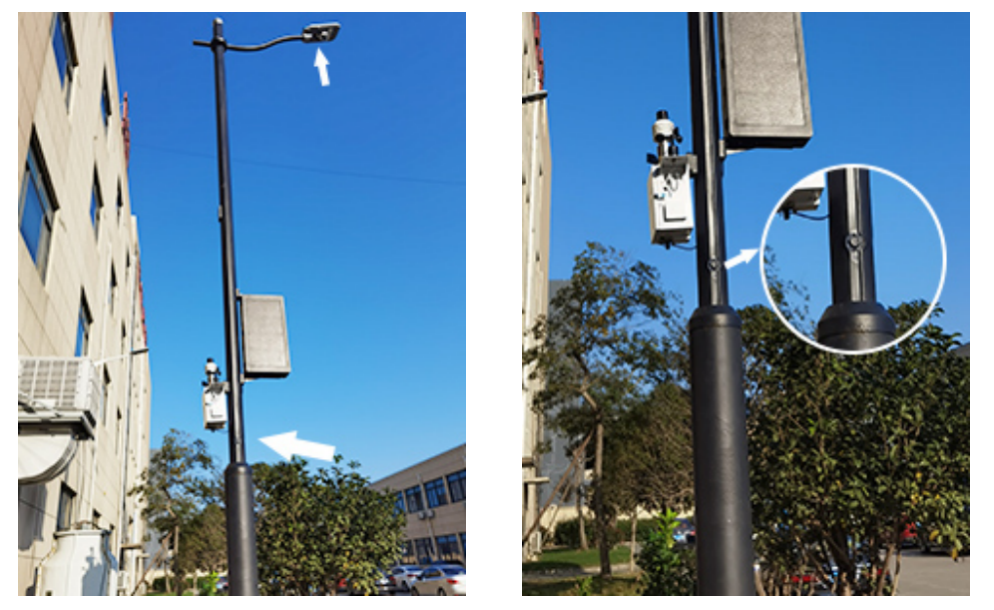
Motion sensors are used where lighting should activate only when needed. They improve both energy efficiency and security.
Security & Perimeter Lighting
Lighting with these products is subject to movement detection. This deters intruders and alerts occupants to activity.
These devices sometimes come along with cameras or alarms. The combination enhances overall security and response time.
Outdoor light savings
Motion sensors activate lights only when movement occurs. This prevents continuous light operations all night. In pathways, energy use drops, boosting savings.
They work best in areas with occasional foot traffic. Constant lighting there would waste power.
Hybrid Systems
Some systems combine both IR and microwave modules. Lights activate only when motion and darkness are both present.
Others require confirmation from both sensors before switching on. This reduces false triggers and ensures precise lighting control.
Which Performs Better, Photocontrollers or Motion Sensors?
Who Saves More Energy — Photocontrol or Motion Sensing?
Light sensor photocell switches shine in long-term lighting. Their steady dusk-to-dawn control avoids needless runtime. This can yield 20–40% energy cuts versus fixed timers.
Motion sensors are more efficient in short bursts. The lights stay off until someone moves. Then turn on only for a preset duration. In low-traffic zones, motion-based lighting can slash usage dramatically.
However, if motion triggers happen often all night, energy savings shrink. The best efficiency arises when motion events are sparse.
Which One Should You Choose for Your Situation?
- If you want continuous lighting (roads, pathways) with minimal intervention → choose photocontrol.
- If lighting is only needed when someone is present (security zones, occasional access paths) → go with motion sensing.
- In mixed environments (some constant light, some motion-based) → consider hybrids or segmented control.
What Is Lux Adjustment in Photocontrol?
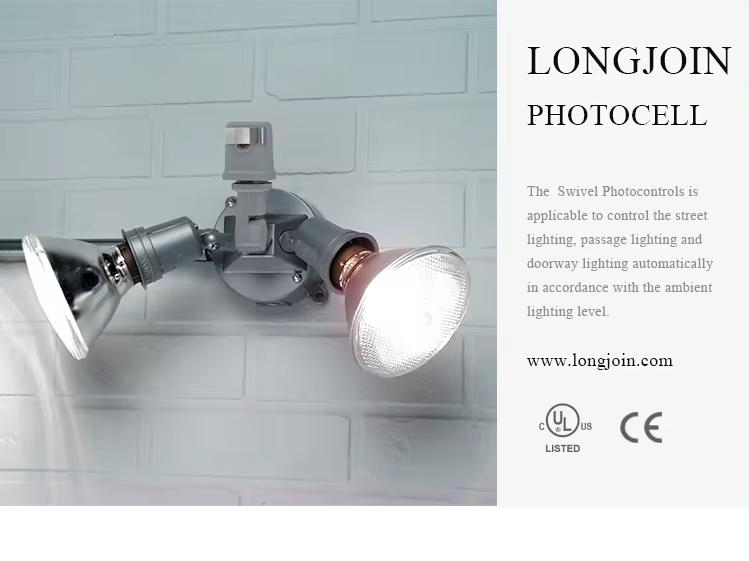
Lux is a unit of luminous flux per area, essentially light intensity as perceived by the human eye.
A photocontroller’s lux threshold determines the ambient light level at which the device triggers on or off.
You should set the lux threshold according to your environment:
- In a brightly lit area (near streetlamps, signage), you might raise the trigger lux so the light doesn’t activate too early.
- In dark rural zones, lower thresholds help ensure lights turn on when ambient light drops.
Some photocontrollers allow adjustment from around 5–50 lux (or more), depending on the model. Choose one with a tunable range matched to your site’s light conditions.
Here is a table for the recommended lux threshold for common outdoor settings.
| Outdoor Setting | Recommended Lux ON (Switch On) | Recommended Lux OFF (Switch Off) | Reasoning |
| Residential Streets | 10–15 lx | 30–50 lx | Balances visibility and energy savings |
| Urban Roads | 20–30 lx | 60–80 lx | High ambient light; needs higher thresholds |
| Gardens & Pathways | 5–10 lx | 20–30 lx | Lower intensity areas |
| Commercial Parking Lots | 15–25 lx | 50–70 lx | Ensures security and wide coverage |
| Rural Roads | 5 lx | 15–20 lx | Minimal background lighting |
Can You Combine Photocells and Motion Sensing?
Yes — combining both often yields the best of both worlds. Many modern fixtures support dual-technology sensors that monitor ambient light and motion simultaneously.
- During true night, the photocontrol ensures baseline lighting.
- Motion sensing boosts brightness or triggers additional zones only when needed.
- This hybrid setup reduces wasted energy while preserving security and responsiveness.
A good example: a parking lot is kept at low illumination all night by photocontrol, but motion triggers full lighting when a car or pedestrian enters.
How Do Sensing Ranges Differ Between the Two Technologies?
Dusk to dawn photocell senses ambient light over broad zones but has no directional range—essentially a “global” trigger. Their “range” is tied to placement and field of view rather than distance. Motion sensors have defined sensing cones or zones (e.g., 5–20 m, 120°) depending on PIR or microwave type.
Choose a motion sensor range to cover anticipated movement paths without overshooting into irrelevant zones. For large areas, use multiple sensors or adjust sensitivity and dead zones accordingly.
What Factors to Consider When Choosing the Appropriate Technology?
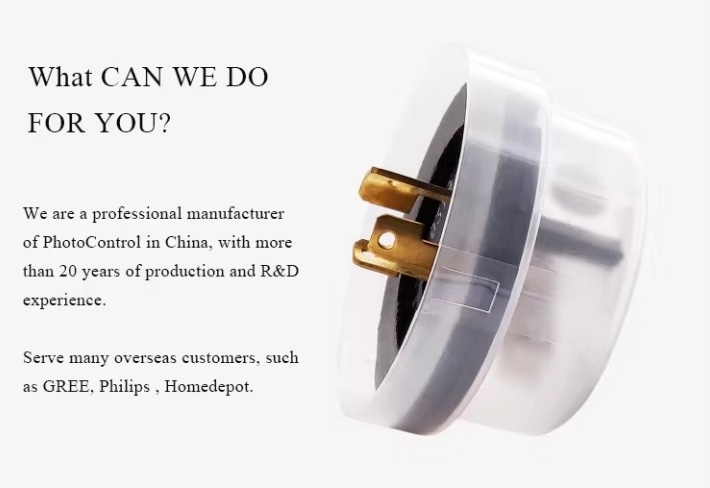
Weather & Durability
Rain or fog can block sensors or photocells. Choose units with good weather sealing — e.g., IP65 or higher. Photocells especially suffer from these factors.
Temperature Extremes
Very hot or very cold climates can shift sensor performance. PIR sensors may give false positives when hot or slow responses when cold. Light sensor switches may also drift in extreme heat. Use models rated for your local temperature range.
Ambient Light & Light Pollution
Nearby lights can confuse photocontrollers. If ambient light is inconsistent, photocontrol may trigger too soon or too late. Adequate shielding or adjusting lux thresholds helps.
Frequency of Use
How often people or vehicles move through matters. In high-traffic areas, the possibility for energy savings is less, so photocontrollers are better. In low-traffic zones, motion sensors can save a lot because lights stay off most of the time.
How Do Safety and Convenience Requirements Affect Your Choice?
When security is a priority, motion sensors offer instant response at the moment of intrusion — more effective for deterrence. Lights triggered by movement provide psychological safety and alert.
However, motion-only systems may leave periods of darkness. If continuous lighting is required (e.g., walkways, public paths), photocontrollers ensure baseline illumination.
User comfort and habits matter: if people expect constant light after dusk, sudden dark periods may be intrusive. A hybrid approach (dim baseline, full brightness on motion) can combine convenience and security.
In spaces with unpredictable movement (e.g., guest entries, parking lots), motion sensors reduce energy waste while still delivering convenience when occupancy occurs.
The Bottom Line
Photocontrollers and motion sensors each offer unique strengths for outdoor lighting. The right choice depends on the usage patterns and security needs. For reliable performance and smart integration, Chi-Swear’s LongJoin photocontrollers are a trusted option. They deliver durability and efficiency for modern outdoor systems.


